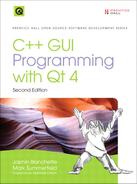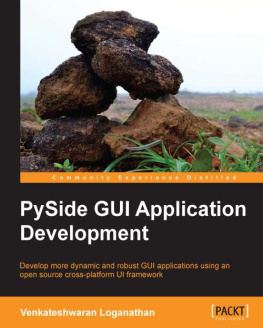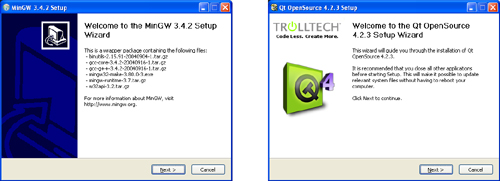Mark Summerfield [Mark Summerfield] - Rapid GUI Programming with Python and Qt: The Definitive Guide to PyQt Programming
Here you can read online Mark Summerfield [Mark Summerfield] - Rapid GUI Programming with Python and Qt: The Definitive Guide to PyQt Programming full text of the book (entire story) in english for free. Download pdf and epub, get meaning, cover and reviews about this ebook. year: 2007, publisher: Prentice Hall, genre: Home and family. Description of the work, (preface) as well as reviews are available. Best literature library LitArk.com created for fans of good reading and offers a wide selection of genres:
Romance novel
Science fiction
Adventure
Detective
Science
History
Home and family
Prose
Art
Politics
Computer
Non-fiction
Religion
Business
Children
Humor
Choose a favorite category and find really read worthwhile books. Enjoy immersion in the world of imagination, feel the emotions of the characters or learn something new for yourself, make an fascinating discovery.
- Book:Rapid GUI Programming with Python and Qt: The Definitive Guide to PyQt Programming
- Author:
- Publisher:Prentice Hall
- Genre:
- Year:2007
- Rating:3 / 5
- Favourites:Add to favourites
- Your mark:
Rapid GUI Programming with Python and Qt: The Definitive Guide to PyQt Programming: summary, description and annotation
We offer to read an annotation, description, summary or preface (depends on what the author of the book "Rapid GUI Programming with Python and Qt: The Definitive Guide to PyQt Programming" wrote himself). If you haven't found the necessary information about the book — write in the comments, we will try to find it.
The Insiders Best-Practice Guide to Rapid PyQt 4 GUIDevelopment
Whether youre building GUI prototypes or full-fledgedcross-platform GUI applications with native look-and-feel, PyQt 4is your fastest, easiest, most powerful solution. Qt expert MarkSummerfield has written the definitive best-practice guide to PyQt4 development.
With Rapid GUI Programming with Python and Qtyoull learn how to build efficient GUI applications that run onall major operating systems, including Windows, Mac OS X, Linux,and many versions of Unix, using the same source code for all ofthem. Summerfield systematically introduces every core GUIdevelopment technique: from dialogs and windows to data handling;from events to printing; and more. Through the books realisticexamples youll discover a completely new PyQt 4-based programmingapproach, as well as coverage of many new topics, from PyQt 4srich text engine to advanced model/view and graphics/viewprogramming. Every key concept is illuminated with realistic,downloadable examplesall tested on Windows, Mac OS X, andLinux with Python 2.5, Qt 4.2, and PyQt 4.2, and on Windows andLinux with Qt 4.3 and PyQt 4.3.
Coverge includes
Python basics for every PyQt developer: data types, datastructures, control structures, classes, modules, and more
Core PyQt GUI programming techniques: dialogs, main windows,and custom file formats
Using Qt Designer to design user interfaces, and to implementand test dialogs, events, the Clipboard, and drag-and-drop
Building custom widgets: Widget Style Sheets, compositewidgets, subclassing, and more
Making the most of Qt 4.2s new graphics/view architecture
Connecting to databases, executing SQL queries, and using formand table views
Advanced model/view programming: custom views, genericdelegates, and more
Implementing online help, internationalizing applications, andusing PyQts networking and multithreading facilities
Mark Summerfield [Mark Summerfield]: author's other books
Who wrote Rapid GUI Programming with Python and Qt: The Definitive Guide to PyQt Programming? Find out the surname, the name of the author of the book and a list of all author's works by series.

![Mark Summerfield [Mark Summerfield] Rapid GUI Programming with Python and Qt: The Definitive Guide to PyQt Programming](/uploads/posts/book/119719/thumbs/mark-summerfield-mark-summerfield-rapid-gui.jpg)

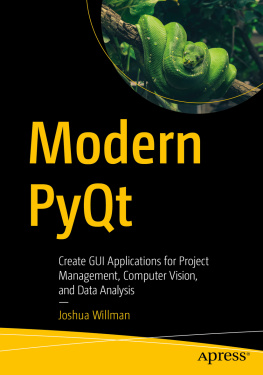
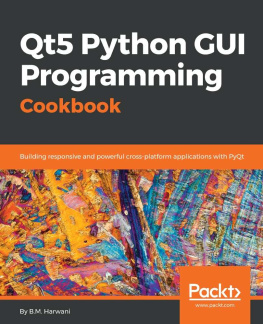
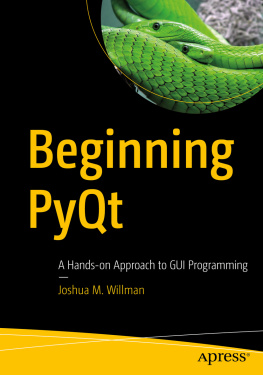
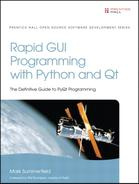
![Mark Summerfield [Mark Summerfield] - Advanced Qt Programming: Creating Great Software with C++ and Qt 4](/uploads/posts/book/119723/thumbs/mark-summerfield-mark-summerfield-advanced-qt.jpg)
